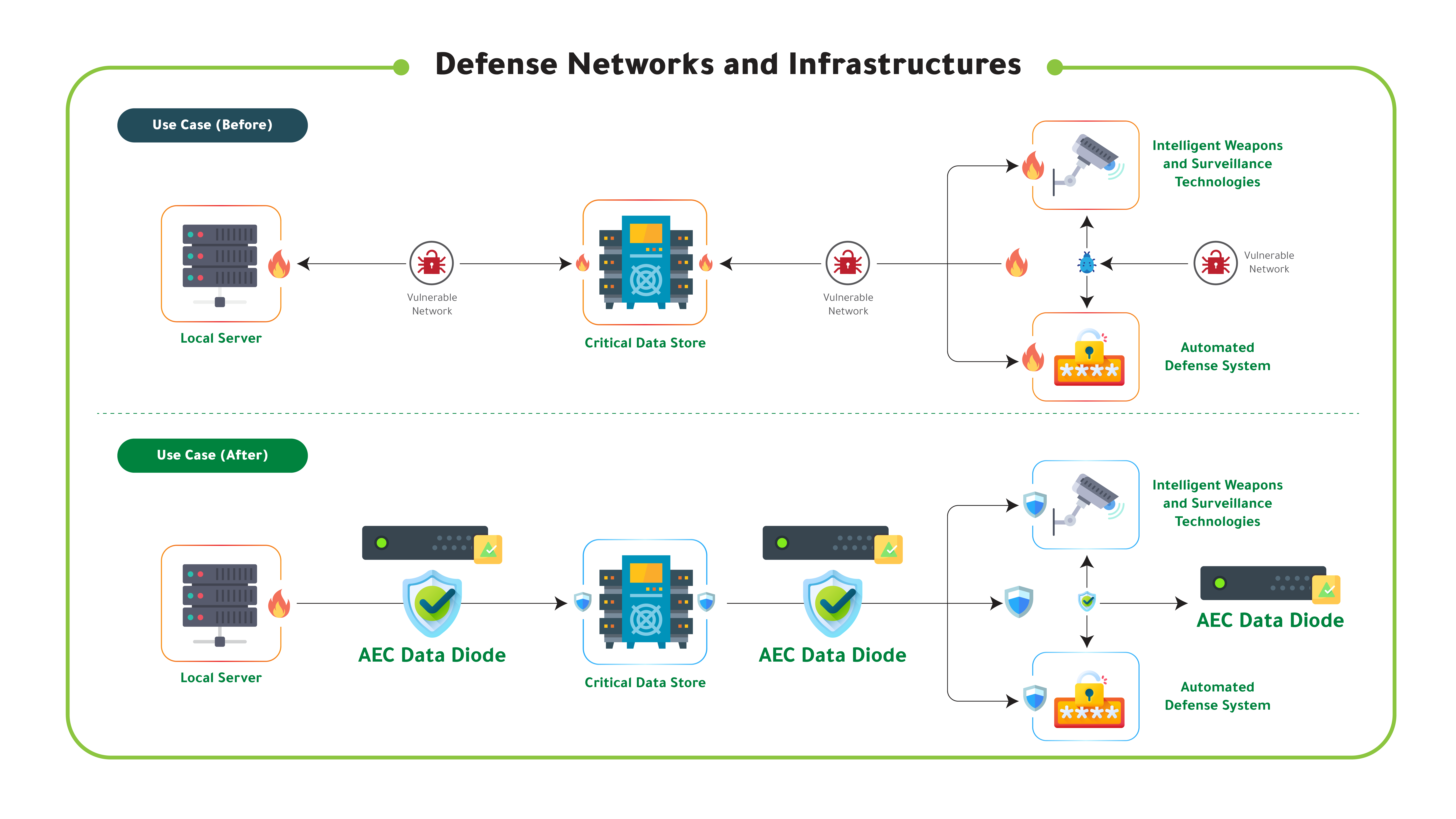Challenge
Advanced persistent threats/attacks launched by neighbouring actors on critical defense data.
Threat Actors
Industrial Case for Data Security
Continuous data flow across automated defense systems, intelligent weapons, and surveillance technologies.
Industry Requirement
A highly secure mode of data transmission that protects defense systems from data breaches by protecting against threat actors.
AEC Data Diode Solution
